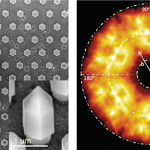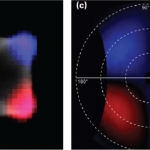Nanophotonics
Nanophotonic crystals have multiple applications that support detection, communications, and display technologies. Their influence, which originates in their orientation and index of refraction, shows tunable selectivity of light distribution by emission angle and wavelength. Wavelength– and angle-resolved cathodoluminescence (WARCL) is a very powerful technique that reveals the distribution of light by wavelength and angle (or the energy and momentum bases, respectively) in relation to the electron beam excitation position.
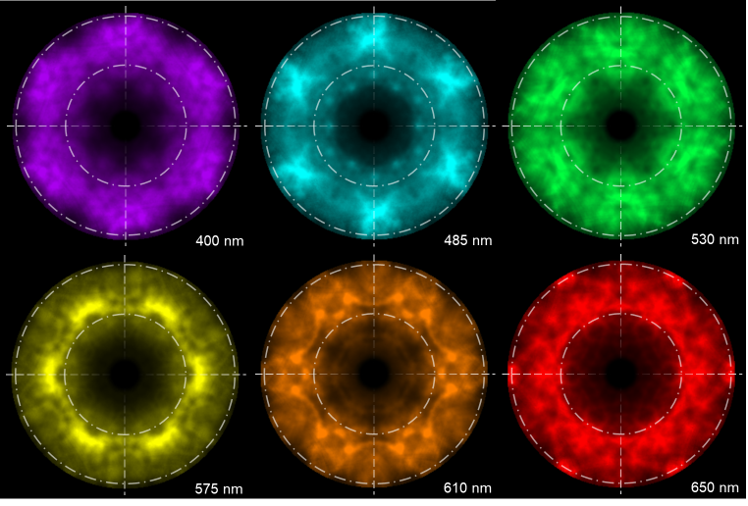
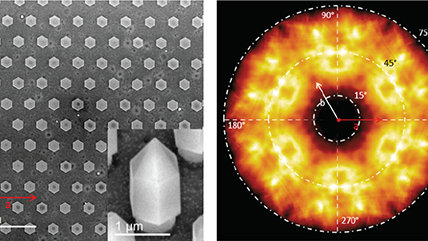 |
Determining photonic band structure by energy-momentum spectroscopy in an electron microscope |
Plasmonics
Plasmons are a collective oscillation of electrons in a material caused by the co-mingling of electric and magnetic fields. Plasmonics can refer to shapes, materials, and interfaces that exhibit behaviors like plasmon propagation (polariton) or resonance. Plasmons can occur in a volume or at a surface, known as a surface plasmon (SP), and can have an effective wavelength much shorter than their free-space counterparts.
The interaction of light causes the resonance of the free electrons. This leads to greatly enhanced electromagnetic fields, particularly in noble metal structures, which can be used in waveguides to enhance light or particle detection and catalysis. Plasmonic metal-based nanoparticles attract significant attention due to numerous novel optical device designs that utilize a nanostructure's size, shape, and composition to enhance light emission and absorption. With qualities such as durability, high spatial resolution, and tunable viewing angle, plasmonics offer significant potential for optical elements in high-resolution color printing and high-density data storage. Recent advancements in nanofabrication technology offer fabrication simplicity with control over the shapes of nanoparticles.
The identification of the plasmon resonance modes and hot spot locations is critical. Still, it presents a significant experimental challenge due to weak light emission levels and smaller particle size than the diffraction limit.
Cathodoluminescence (CL) is a natural technique for plasmonic investigations for myriad reasons. Plasmons can be stimulated through interaction with photons (as in a photoluminescence (PL) experiment) or energetic electrons of an electron microscope. The electron beam probe size used in CL microscopy is on the order of a few nanometers, thus providing much higher spatial resolution than PL and generating other signals to determine sample size, shape, structure, and composition. Furthermore, the energetic electron probe can be considered a broadband excitation source whereby the plasmonic modes excited do not rely on the wavelength (energy), direction, or polarization specificity of the excitation source. CL output data would not contain influence from the excitation source as it may in a PL experiment.
Results from an Au-Pd nanostar deposited on a (non-luminescent) silicon substrate are shown as an example. Secondary electron imaging (a) revealed the nanostar to be approximately 100 nm on edge, and CL spectrum imaging revealed intense emission (wavelength of 600 nm) emitted when the electron beam was positioned at the nanostar tips, indicative of plasmonic resonance between the nanostar tips. Polarization-filtered spectrum imaging revealed the resonance as dipolar modes from opposing tips (red and blue in (b)).
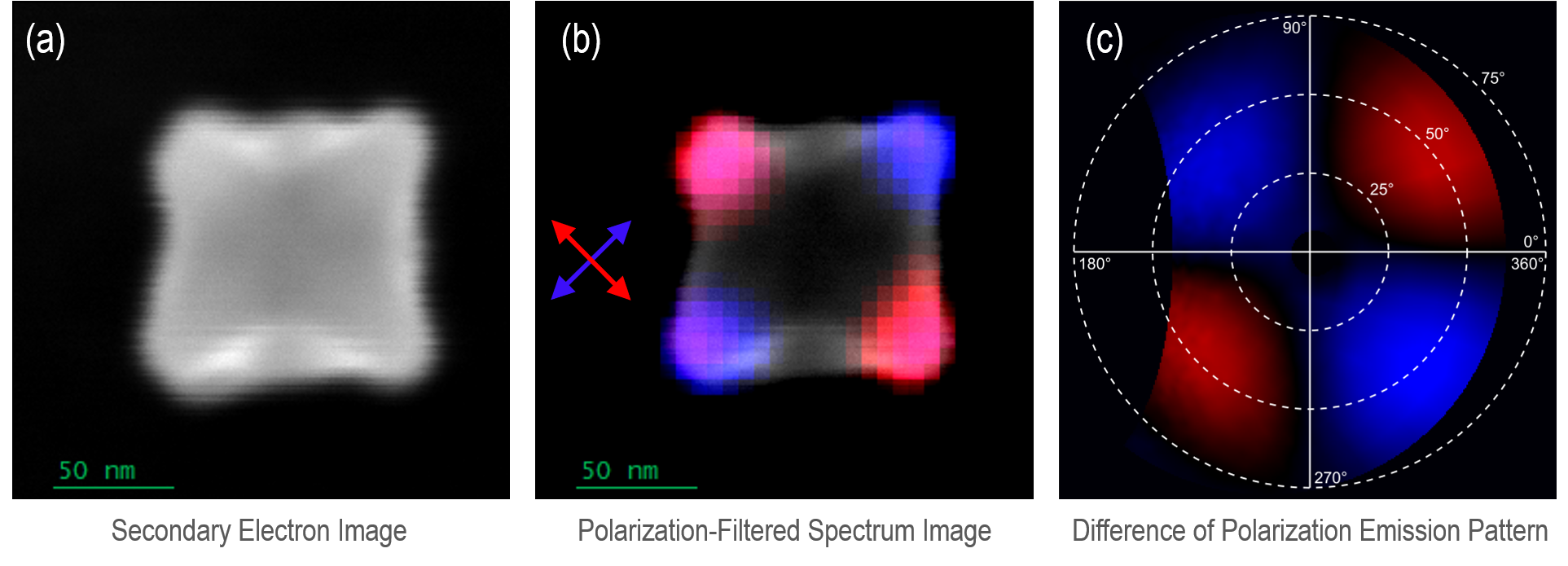
Angle-resolved CL (ARCL) emission patterns were recorded from each tip of the nanostar (e.g., each resonance node). The difference in emission patterns from each resonance mode is displayed in (c), highlighting distinct emission patterns associated with each mode.
Experimental briefs and application notes
| Determining photonic band structure by energy-momentum spectroscopy in an electron microscope | Investigating the optical properties of nanophotonic materials far below the diffraction limit |
Metamaterials
Metamaterials are a class of material with widely tunable optical properties and show promise for exotic applications such as negative refractive index materials. They are materials with contrasting permittivity (ε) and permeability (μ) arranged in discrete periods below the diffraction limit. The material period should be much smaller than the wavelength (or wavelength range) of interest such that the impingent radiation experiences effective material properties and can be periodic in one-dimension (1D), two-dimensions (2D), or three-dimensions (3D) to offer control over the effective index of refraction anisotropically.
Metamaterials are commonly characterized by their effective index of refraction, n, where n2 = ε.μ. Many examples of metamaterials employ plasmonic metal shapes, using their resonance behaviors to fabricate selective absorbers, emitters, and waveguides.
Due to the nanometer-scale probe size, electron-based excitation, and the recent advent of angle-resolved (AR) and wavelength- and angle-resolved (WAR) modes of operation, cathodoluminescence (CL) proves to be an ideal technique for investigating metamaterials. In the case of the Au-based asymmetric split ring (ASR) resonator metamaterial, CL is useful for observing their emission spectrum and directionality.
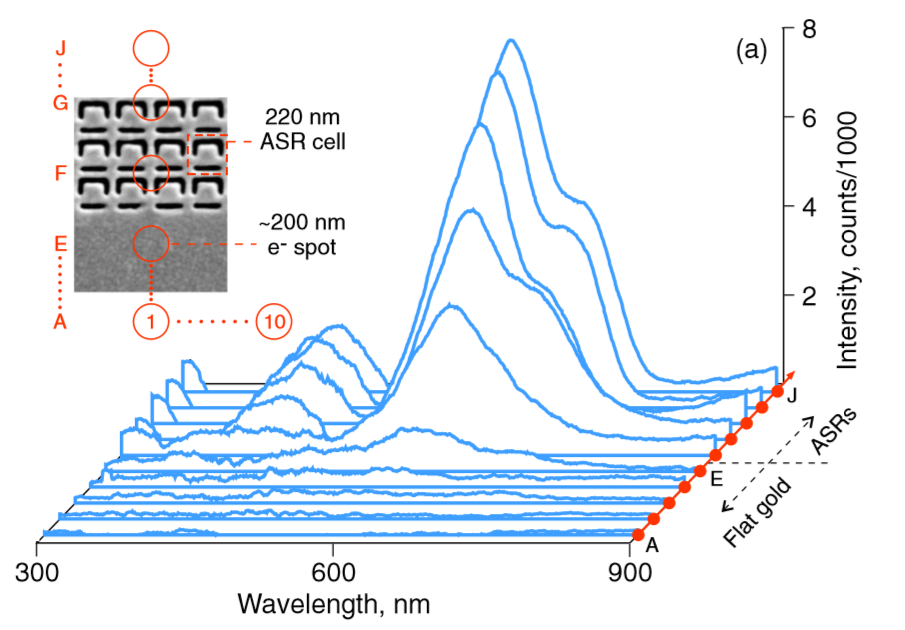
The difference between photonic crystals and metamaterials is period: To have the photonic band gap the atoms and the lattice constant in the former have to be comparable in size with the wavelength. At the same time, the periodicity should be much smaller than the wavelength for the latter.
 |
Determining photonic band structure by energy-momentum spectroscopy in an electron microscope |
Photonic Structures
Photonic crystals, also known as photonic band gap materials, are the subject of numerous investigations because of their unique characteristics, with prospective applications ranging from gas sensing to optical filters, inkless printing, and reflective displays. Photonic crystals are highly ordered materials with a periodic dielectric constant, whose period is on the order of the wavelength (or wavelength range) of interest. The effect of confining and controlling light propagation stems from the photonic band gap, a band of frequencies in which light propagation in the photonic crystal is forbidden. It is possible to design 1D, 2D, and 3D photonic crystals through variations in the refractive index and periodicity.
To combat the issues with using flat emitters, researchers turn their attention to 3D microLEDs. Such emitters have the obvious advantage of increased surface area. Further, the increased dimensionality allows for the formation of quantum wells on the sides of the emitter. The increased dimensionality also provides access to various crystal faces. In the case of GaN, it includes the m-plane that benefits from a reduced native electric field near the surface, reducing the influence of the quantum confined stark effect (QCSE), thereby increasing emitter efficiency.
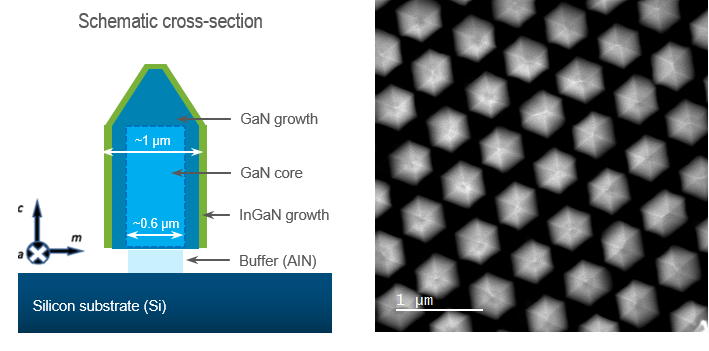
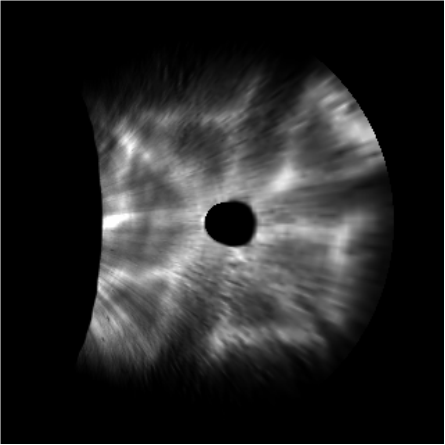
To determine the photonic behavior of such an array, we employ the wavelength and angle-resolved CL (WARCL) technique. The WARCL pattern shows distinct anisotropy at several wavelengths relevant to the pillar material, dimensions, and periodicity.
This shows the anisotropy in the light emission as a function of wavelength, which is directly valuable for potential display technology. However, the wavelength-angle bases are not ideal for analyzing photonic modes; for this, they may transform from wavelength-angle to energy-momentum bases.
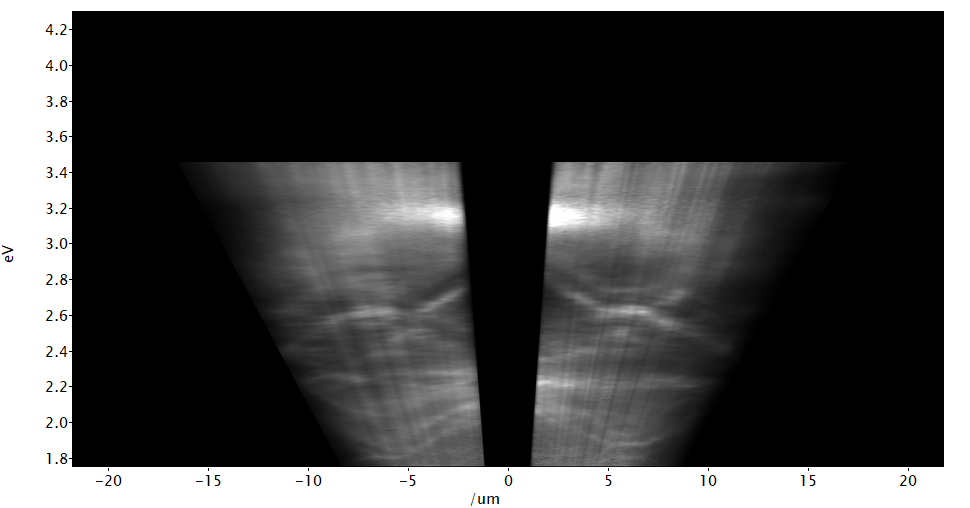
In this way, CL is useful for probing the local density of optical states (LDOS) in the photonic specimen, which is paramount in designing nanophotonic structures.
 |
Determining photonic band structure by energy-momentum spectroscopy in an electron microscope |
